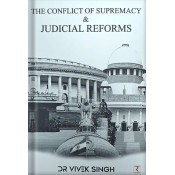The case of His Holiness Kesavananda Bharati Sripadagalvaru v. State of Kerala decided after the longest hearing of sixty six days in the Supreme Court by the largest bench of 13 judges of the Court on 24 April 1973 is India’s greatest Constitutional case. It is considered to have decided by a majority of 7 to 6 judges that Parliament did not have the power to amend the “Basic Structure of the Constitution”.
Though the case was cast in the form of a legal issue on Parliament’s power to amend the Constitution it was a culmination of a struggle for supremacy between the Supreme Court and the Parliament, which began with the Supreme Court holding in Golak Nath v. State of Punjab in 1967 by a majority of 6 to 5 that Fundamental Rights could not be amended by the Parliament. The Government of the day made the reversal of the Golak Nath case a political issue that the Court was preventing necessary amendments of the fundamental right to property for necessary economic reforms. In anticipation of a major legal battle in Court by a larger bench of thirteen judges, Government appointed judges who it expected would decide in favour of Parliament.
This book recounts the tensions and conflict in the Kesavananda Bharati case not only between the rival sides but also amongst the judges, some of whom had preconceived views because of being judges in the earlier cases and others by reason of their selection by the Government. The acrimony over the proposal to exclude Justice M.H. Beg who was in favour of Parliament by the Chief Justice and the Petitioners from the bench on this hospitalization almost at the end of the oral hearing is related as is the controversy over whether Justice Y.V. Chandrachud was prevailed upon to change his opinion against Parliament.
Most importantly, the book reveals the stratagem of the Chief Justice S.M. Sikri on the date of the judgments on 24 April 1973 by which he formulated on a paper hurriedly prepared by him ” The View by the Majority”. This paper was signed in Court by 9 judges, 4 other judges refusing to subscribe their signatures to it. This has come to be known as the majority decision in the case.
The book relates how Government retaliated immediately on the judgments being pronounced on 24 August 1973 by superseding three senior most judges who had decided against Parliament and appointing Justice A.N Ray as the next Chief Justice. It also relates the generally unknown abortive attempt of Chief Justice A.N. Ray to review the Kesavananda Bharati case by another bench of 13 judges for two days in 1975. The Government attempted to nullify the majority view in the Kesavananda Bharati case by the Constitution (42nd Amendment) Act, 1976, but the Supreme Court later struck it down in the Minerva Mills case in 1980.
This book also shows how later cases of the Supreme Court have distilled the concept of the Basic Structure of the Constitution and how it has been considered in other jurisdictions.
This is a gripping story of the conflicts and tensions in the Kesavananda Bharati case and its aftermath which has not been disclosed so far. It is based on the author’s recollection and detailed notes maintained by him as a Counsel in the case and on later interviews by him with some of the judges in the case.
Contents:
- CHAPTER I: THE POLITICAL OVERTONES OF THE KESAVANANDA CASE
- CHAPTER II: TENSIONS AND CONFLICTS IN THE CASE
- CHAPTER III: JUSTICE BEG'S ILLNESS AND HOSPITALIZATION
- CHAPTER IV: WAS THERE A RATIO IN KESAVANANDA CASE THAT "PARLIAMENT HAS NO POWER TO AMEND THE BASIC STRUCTURE OF THE CONSTITUTION"?
- CHAPTER V: DID JUSTICE CHANDRACHUD CHANGE HIS JUDGMENT?
- CHAPTER VI: WERE FUNDAMENTAL RIGHTS HELD TO BE A PART OF THE BASIC STRUCTURE IN THE KESAVANANDA CASE?
- CHAPTER VII: THE IMMEDIATE RESPONSE OF GOVERNMENT TO THE KESAVANANDA JUDGMENTS
- CHAPTER VIII: HOW THE KESAVANANDA CASE SURVIVED AN ATTEMPT TO REVERSE IT BY THE COURT
- CHAPTER IX: PARLIAMENT/GOVERNMENTS ATTEMPT TO OVERCOME THE KESAVANANDA "MAJORITY VIEW"
- CHAPTER X: DID THE SUPREME COURT OR PARLIAMENT PREVAIL IN THE STRUGGLE FOR SUPREMACY?
- CHAPTER XI: BASIC STRUCTURE LATER DISTILLED BY THE SUPREME COURT
- CHAPTER XII: CONCLUSION
- APPENDIX 1: CONSTITUTIONAL AMENDMENTS
Universal's Kesavananda Bharati Case: The untold story of struggle for supremacy by Supreme Court and Parliament by T.R. Andhyarujina | LexisNexis
- Publisher: Universal Law Publishing Co.
- Book Code: 9789389991031
- Availability: 10
-
Rs395.00
Related Books
Thomson Reuters Commentary on Parliamentary Privileges - Law and Practice by Adv. Ram Jethmalani & Prof. D. S. Chopra (HB)
This book deals with various aspects of Parliamentary Privileges including its conflict with the ..
Rs2,500.00
Universal's Our Parliament by Justice M. Rama Jois
Contents of the Book: Part 1: Speeches Made in Rajya Sabha Part 2 : Special Mention..
Rs495.00
Universal's Parliamentary and Constitutional Law Dictionary By Dr. H. K. Saharay
This book is a comprehensive work on Parliamentary and Constitutional Law in general form Jurispr..
Rs395.00
Practice and Procedure of Parliament by M. N. Kaul & S. L. Shakdher, Lok Sabha Secretariat India
Practice and Procedure of Parliament by M. N. Kaul & S. L. Shakdher, Lok Sabha Secretariat In..
Rs4,500.00
Universal's The Indian Parliament Beyond the Seal and Signature of Democracy by Devender Singh
The Indian Parliament Beyond the Seal and Signature of Democracy ..
Rs625.00
Rudra Publication's The Conflict of Supremacy & Judicial Reforms by Dr. Vivek Singh
..
Rs595.00 Rs699.00
Tags: Universal law Publishing, Kesavananda Bharati Case, T.R. Andhyarujina, LexisNexis

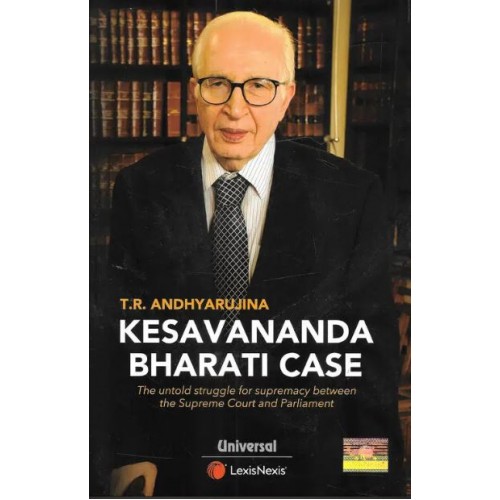
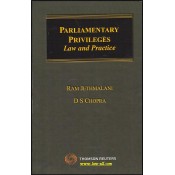
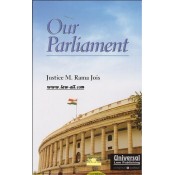
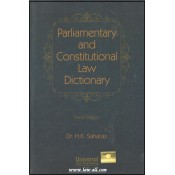
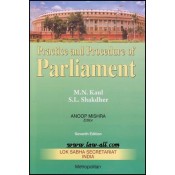
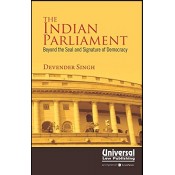
![Eastern Book Company's Courting Politics by Shweta Bansal [HB] Eastern Book Company's Courting Politics by Shweta Bansal [HB]](https://law-all.com/image/cache/catalog/data/Book Images/EBC/2017/9789351455554-175x175.jpg)
